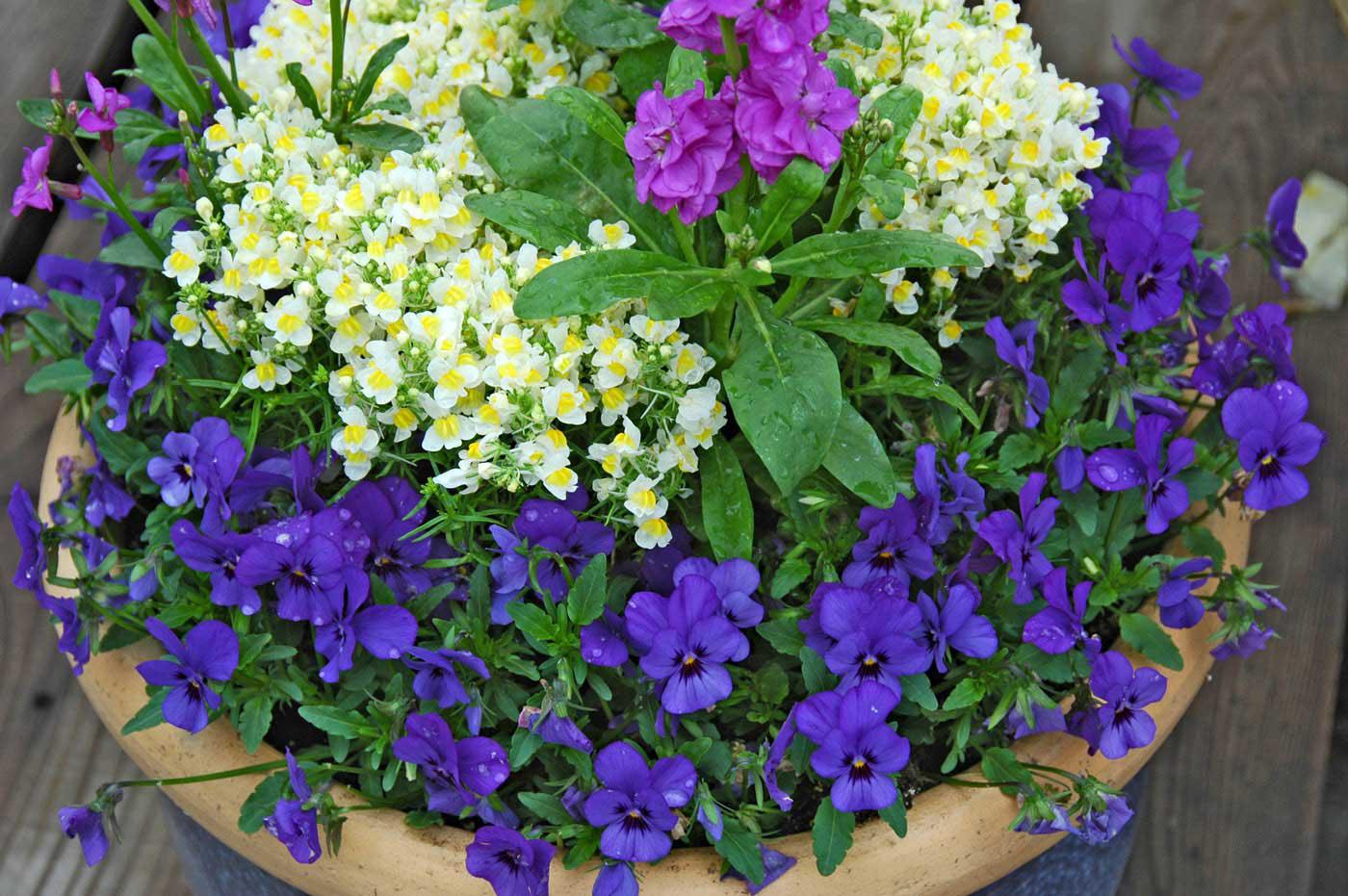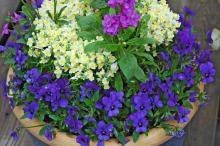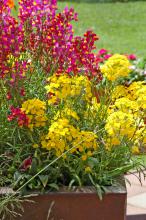Information Possibly Outdated
The information presented on this page was originally released on November 1, 2007. It may not be outdated, but please search our site for more current information. If you plan to quote or reference this information in a publication, please check with the Extension specialist or author before proceeding.
Container gardens can thrive in cool seasons
By Norman Winter
MSU Horticulturist
Central Mississippi Research & Extension Center
Colorful, cool-season containers near the front door or entryway serve as welcoming beacons to friends and visitors coming our way this fall and during the holiday season.
I just returned from speaking at the 19th annual Southern Garden Symposium in St. Francisville, La., where historic homes were accented with colorful flower containers. The landscapes all had incredible form and texture from evergreen trees, shrubs and groundcovers.
The homes, dating from the late-1700s forward, are surrounded by moss-draped, majestic live oaks. Containers were added to welcome all who approach to take in the history and the beauty of the area. Whether we plan on extensive cool-season beds or not, we can all enjoy color in containers on the front porch, patio or deck.
If you think container gardening is just for the spring and summer, it's time to adjust that thought pattern. Cool-season container gardening is just as much fun as warm-season, and certainly as beautiful with the array of plants available at local garden centers.
The first order of business is to choose a container large enough to hold several plants and equipped with that mandatory drainage hole in the bottom. If you are using the lightweight containers that look like terra-cotta or stone, you may have to drill your own holes. While you are at it, add four or five holes that are about three-fourths of an inch in diameter.
Don't forget to use colorful bowls as well. Bowls are easy to tuck indoors should the winter really turn nasty for a few days.
Choose a good lightweight, fluffy potting mix that already has controlled-released granular fertilizer mixed in. The same theory or rule of thumb for the “thriller, spiller and filler” holds true in the winter just as it does in the summer: you need a “thriller” for the center plant, a “spiller” to cascade over the edge and a “filler” for any empty spots.
If the container is large enough, choose a thrilling evergreen like a juniper or upright rosemary as the center plant. If the container is smaller, your thriller will be smaller. Use Swiss chard, Redbor kale or Red Giant mustard as the center plant, then build around it. You also can use taller flowers as the center plants, such as snapdragons and their relatives linaria, nemesia and diascia, as well as stock and erysimum.
The first options for flowers to fill around the rim or to spill over the edges are pansies and violas. Here, you can pick your favorite color and design around them. For pockets of greenery, use ivy, dwarf sweet flags and even sages.
So you can see we have options not only for color and beauty but for enticing fragrance and culinary use as well.
Even though the temperatures will be much cooler, we must pay attention to plants' water needs. You certainly will not have to water every day like you did in the summer, but supplemental irrigation will be needed.
Don't forget to fertilize. This is a good season to mix up the water-soluble fertilizer and feed every couple of weeks.
The winter landscape becomes wonderful with the dark silhouettes of trees towering above evergreens, such as hollies, ligustrums, wax myrtles, azaleas and camellias. A container or two of color will be a great finishing touch around any home.




